Market Vectors® Agribusiness ETF
Latest Market Vectors® Agribusiness ETF News and Updates
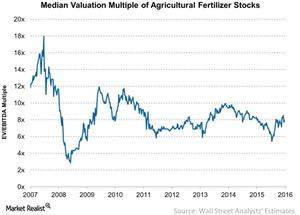
How Do Valuation Multiples Compare among Fertilizer Companies?
To date, the median valuation of fertilizer stocks is around 7.9x. That’s at the midpoint of the nine-year average of 8.2x.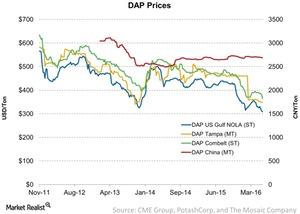
Last Week’s DAP Fertilizer Price Trends: Must-Knows
Ammonia is used to make phosphate fertilizers like DAP (diammonium phosphate) and MAP (monoammonium phosphate).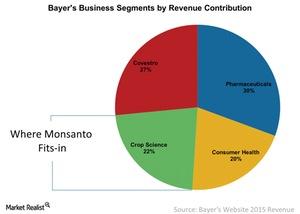
How Monsanto’s Business Fits into Bayer’s Portfolio
What’s in it for Bayer when it comes to acquiring Monsanto (MON)? The answer lies in Bayer’s business segments and geographic reach.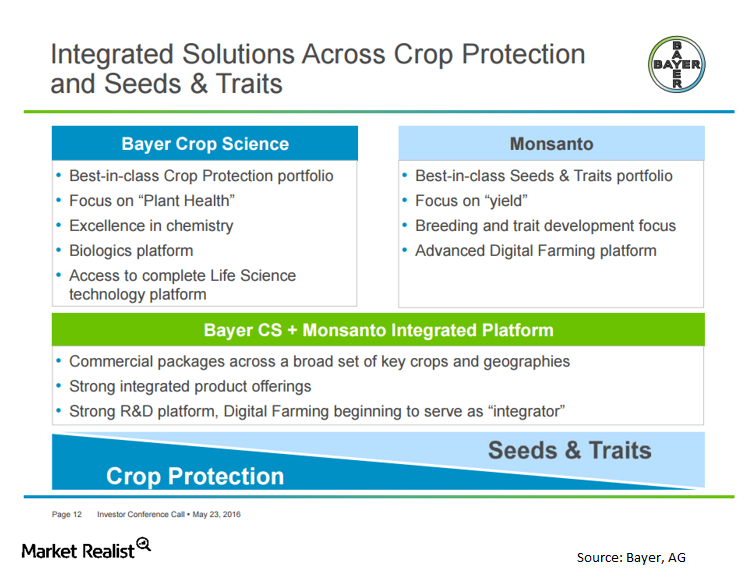
What’s the Rationale for the Bayer-Monsanto Deal?
In the Monsanto-Bayer deal, Bayer’s shareholders should expect to see mid-single-digit accretion to core EPS (earnings per share) in the first year and double-digit accretion thereafter.
How Deere’s Margins Differ across Key Geographical Markets
The US and Canada regions were responsible for 63.9%, 63%, and 66.1% of Deere & Company’s (DE) total revenues in 2013, 2014, and 2015, respectively.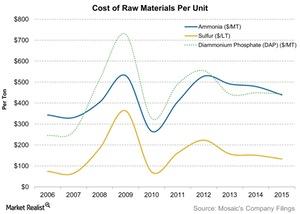
How Has Mosaic Done in Terms of Raw Material Costs?
Mosaic purchases certain raw materials at fixed costs to be consumed over time, but the selling prices of its finished goods can fluctuate rapidly.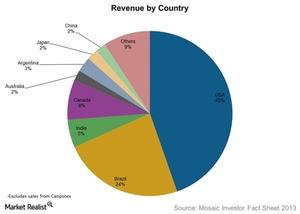
Who Are Mosaic’s Customers and How Does It Reach Them?
Mosaic doesn’t sell directly to farmers. Its customers include cooperatives, wholesale distributors, retail chains, and independent retailers.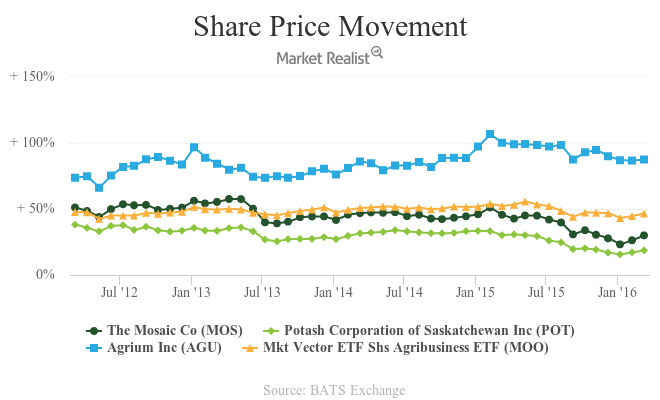
How Phosphate Fertilizer Prices Are Changing Trends
In the 2010–2011 planting season, phosphate fertilizers accounted for about 23% of total NPK fertilizers consumed globally.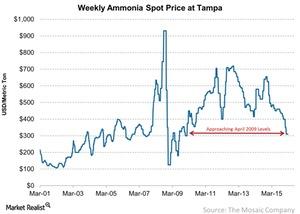
Ammonia Prices Fell Slightly from the Previous Week
Ammonia was trading at $310 per metric ton as of the week ending March 4, 2016. It fell $1 from the previous week ending February 26, 2016.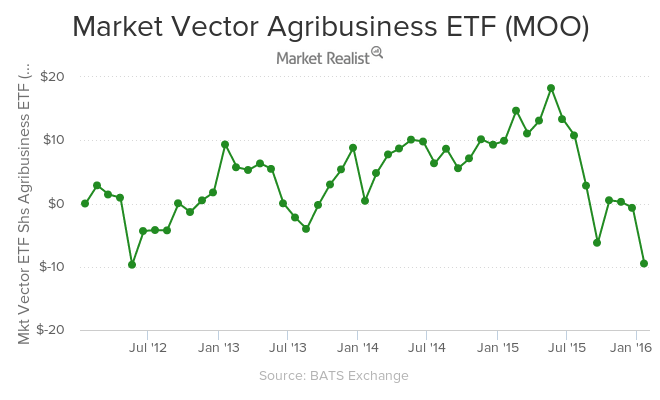
The Prevalent Price of Potash in 2016
As of January 19, 2016, the VanEck Vectors Agribusiness ETF (MOO) returned -12.7% in 2015. YTD as of January 19, the ETF is down by 8%.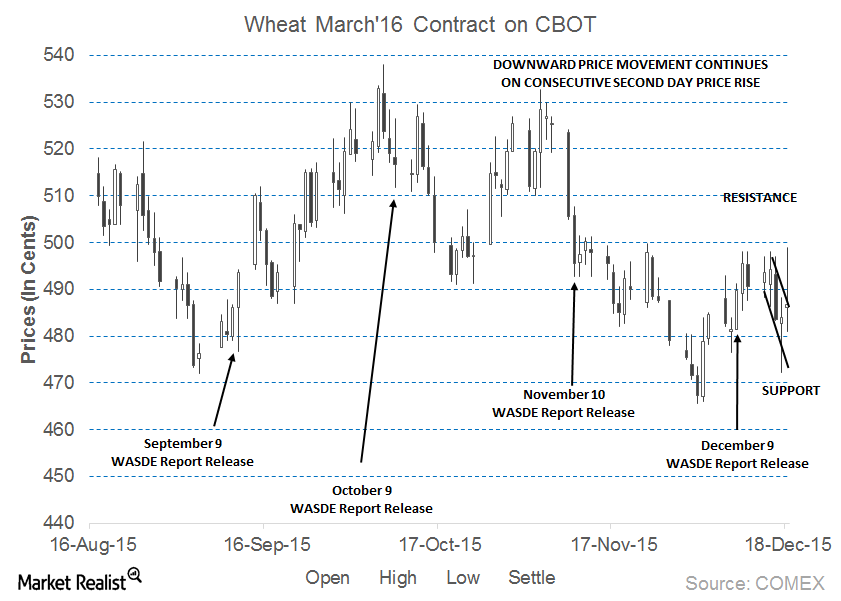
Wheat Prices Trade above 20-Day Moving Average
Wheat futures contracts for March expiry were trading above the key support level of 485 cents per bushel on December 18, 2015.
How CVR Partners Benefits from Pet Coke Prices
Unlike other companies, CVR Partners (UAN) uses petroleum coke, or pet coke, to produce nitrogen fertilizers.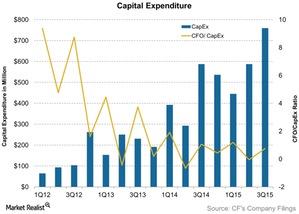
What is CF Industries’ Capital Expenditures Ratio Telling Us?
CF Industries’ cash flow to capital expenditure ratio has been falling. CF Industries’ cash flow to capital expenditure ratio stands at 0.75 as of 3Q15.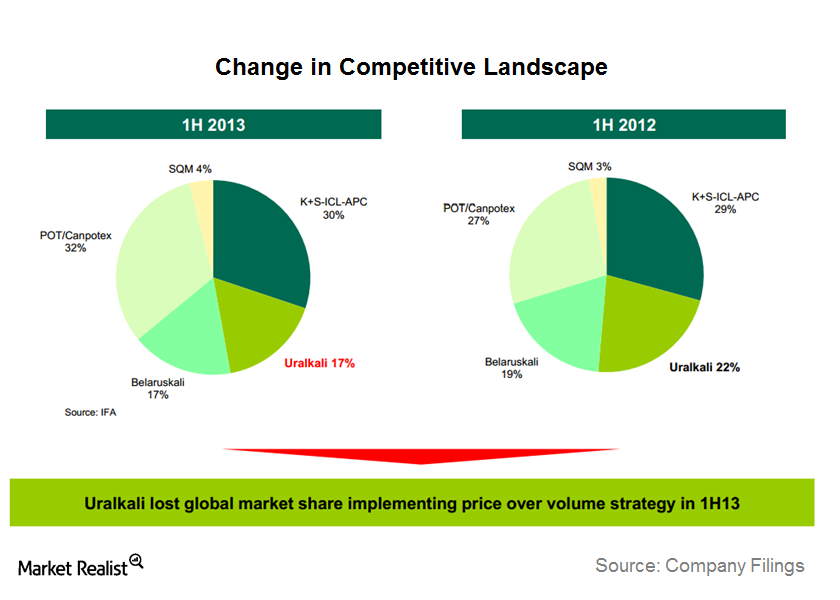
Why is Uralkali taking back—not gaining—fertilizer market share?
Uralkali’s move towards a volume-over-price strategy in order to gain market share (more like taking back market share) was the more important story.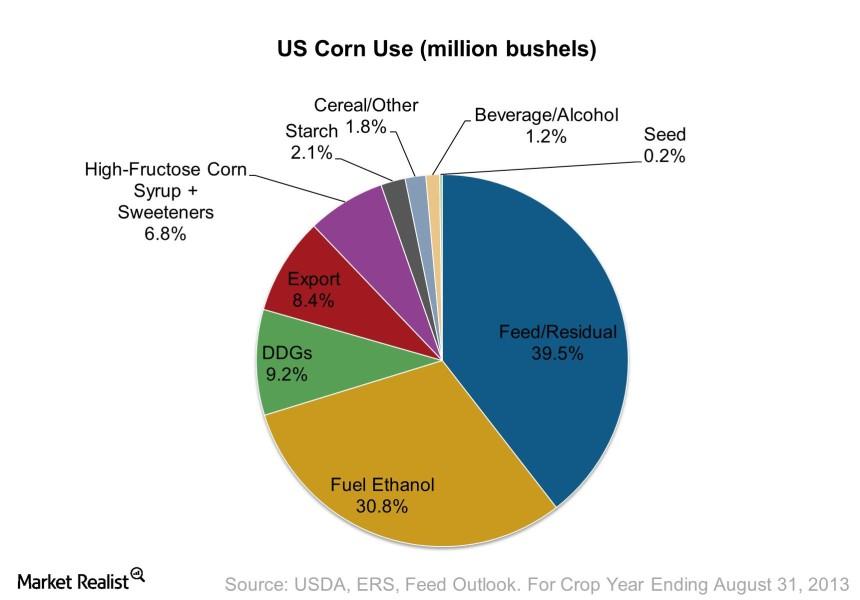
Why the average American uses more than 4 ears of corn per day
The United States is the biggest user of corn, consuming 265 million mt (metric tonnes) of corn in 2012—equivalent to 26% of global consumption.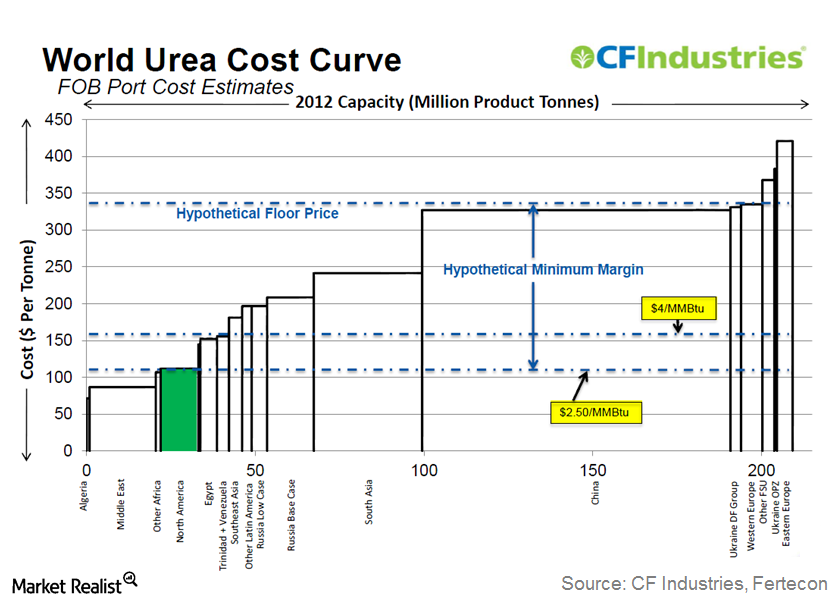
Overview: The key factors that drive ammonia and urea prices
In this series, we’ll cover how costs in the United States, China, and Europe influence nitrogenous fertilizer prices along with other factors.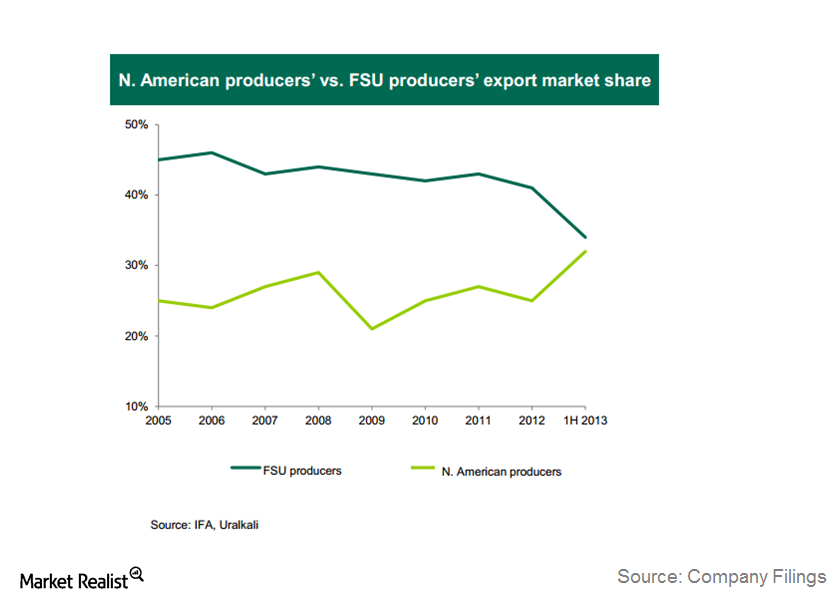
Why the wayward Canpotex upset the Russian giant Uralkali
In its recent earnings call, Uralklali highlighted its new strategy, called the Revenue Maximization Strategy.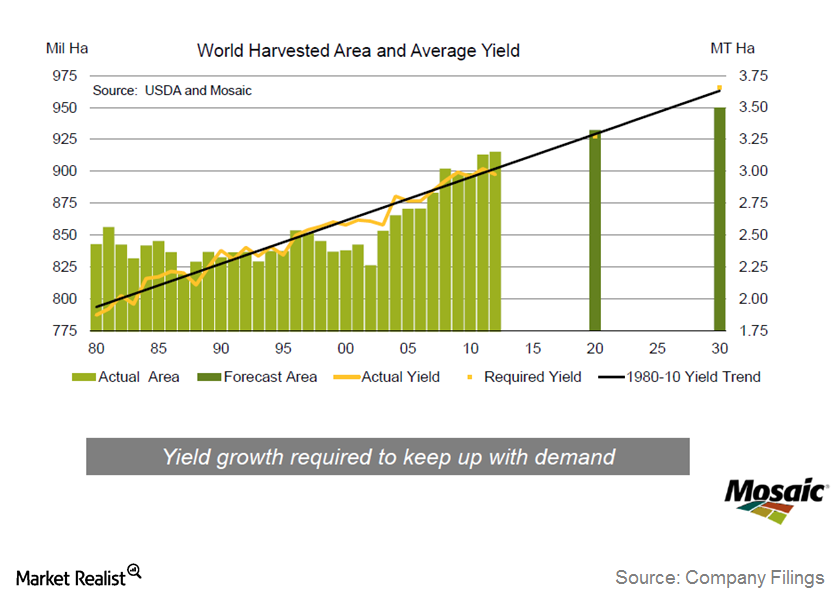
Why Mosaic shows that agriculture is always a cyclical business
In this series, we’ll explore Mosaic Co.’s latest discussions on its third quarter 2013 earnings results and the industry outlook.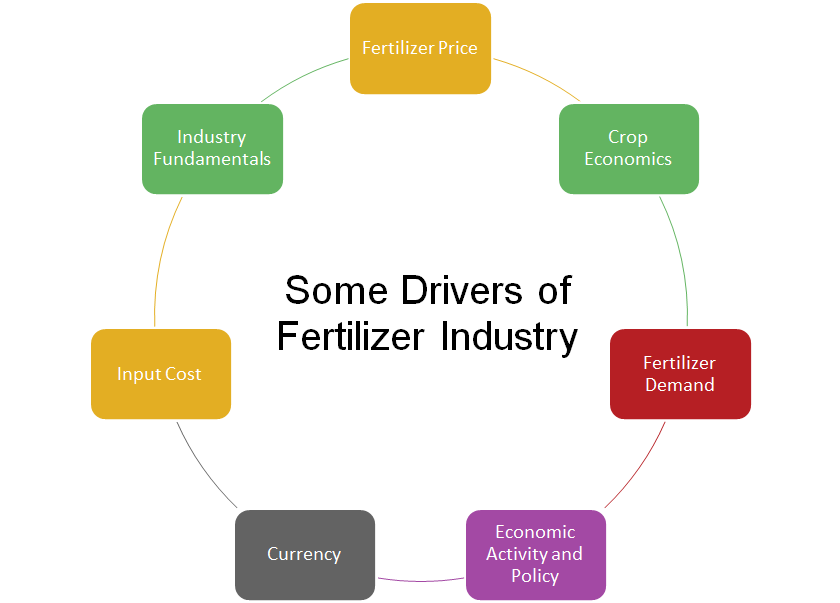
Analyzing the key factors that affect the fertilizer industry
The Essential Fertilizers Weekly series comprises key factors that have a potential impact on the bottom line—depending on revenue and expenses.
Must-know: The key drivers of fertilizer company performance
The importance of the bottom line The performance of any investment over the medium to long term depends on current or future changes in the bottom line, like earnings per share, free cash flow per share, EBITDA (earnings before interest, tax, depreciation, and amortization) per share, and dividend per share. When the bottom line is […]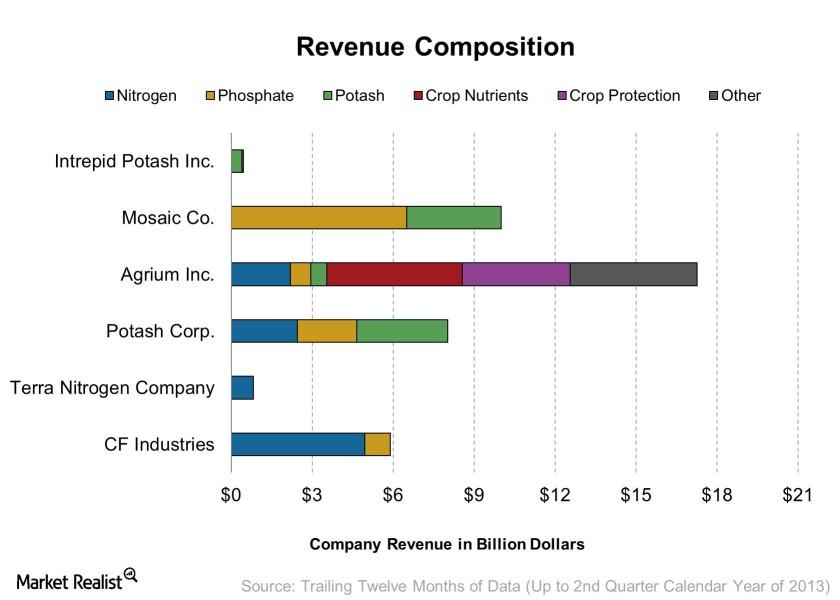
Revenue composition of major publicly traded fertilizer stocks
Main companies traded on the US market There are six main fertilizer producers that are widely traded on the US stock exchange: CF Industries Holdings Inc. (CF), Agrium Inc. (AGU), Mosaic Co. (MOS), Potash Corp. (POT), Terra Nitrogen Company LP (TNH) and Intrepid Potash Inc. (IPI). While they all operate producer fertilizers, each are exposed […]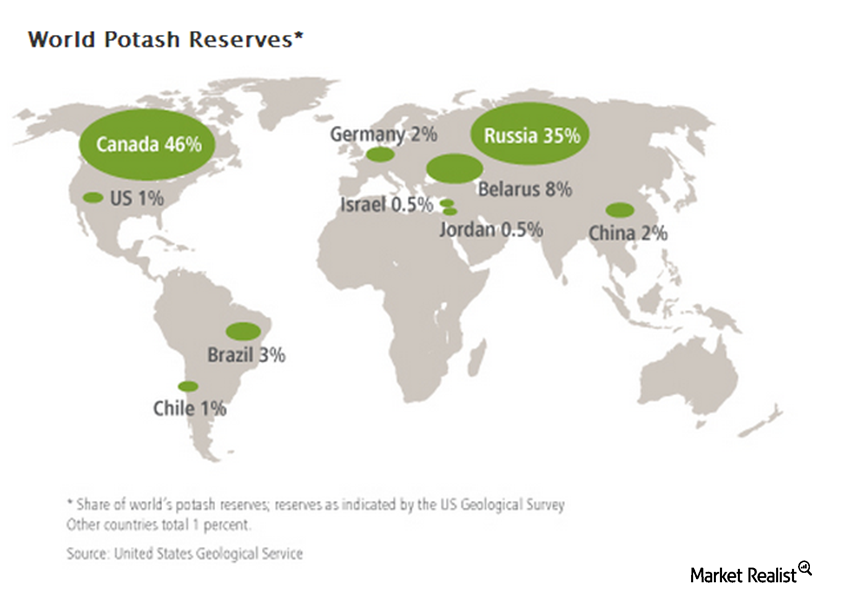
Must-know: Why cost and location affect potash production
Where potash is found Of all the fertilizer sub-industries, potash is the most concentrated. Mineral deposits of potash are more geographically concentrated than phosphate rock. Most of these resources are found in Canada, Russia, and Eastern Europe. Because of this, a large chunk of the world potash supply is controlled by companies like Potash Corp. […]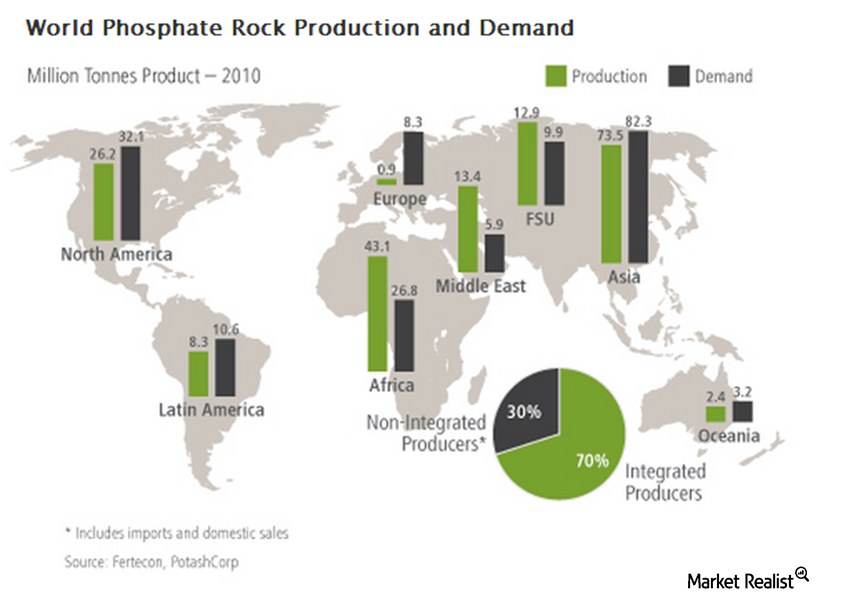
Why phosphate is a less competitive fertilizer sub-industry
The phosphate industry is less competitive than the nitrogen industry Unlike nitrogen-based fertilizers, the production of phosphate and potash fertilizers begins in mines. Mineral deposits for the latter two fertilizers are much scarcer and are usually concentrated in specific regions around the world. Because of this, there are fewer firms that make up the two […]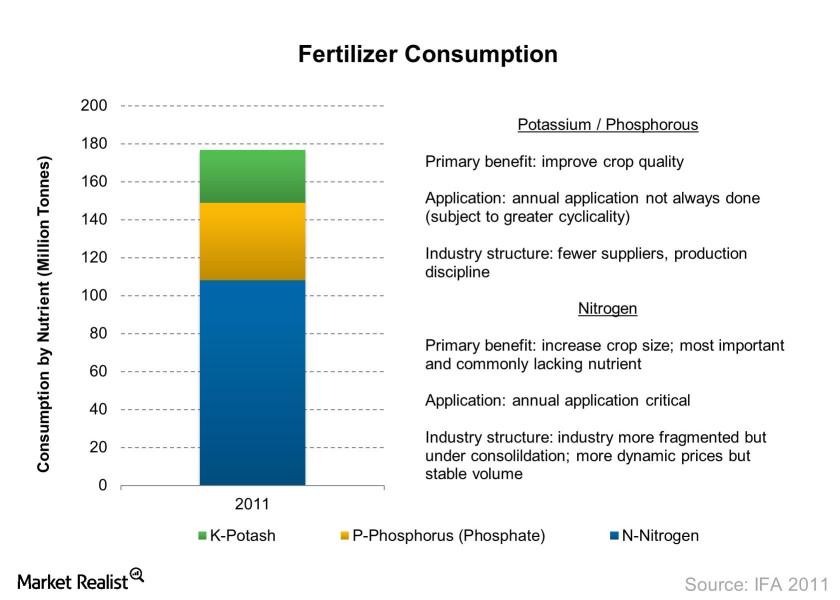
Fertilizer industry overview: Must-know fertilizer types
Fertilizers are used in the agriculture industry to improve the yield farmers receive. The three main types of nutrients or fertilizers are nitrogen, phosphate, and potash.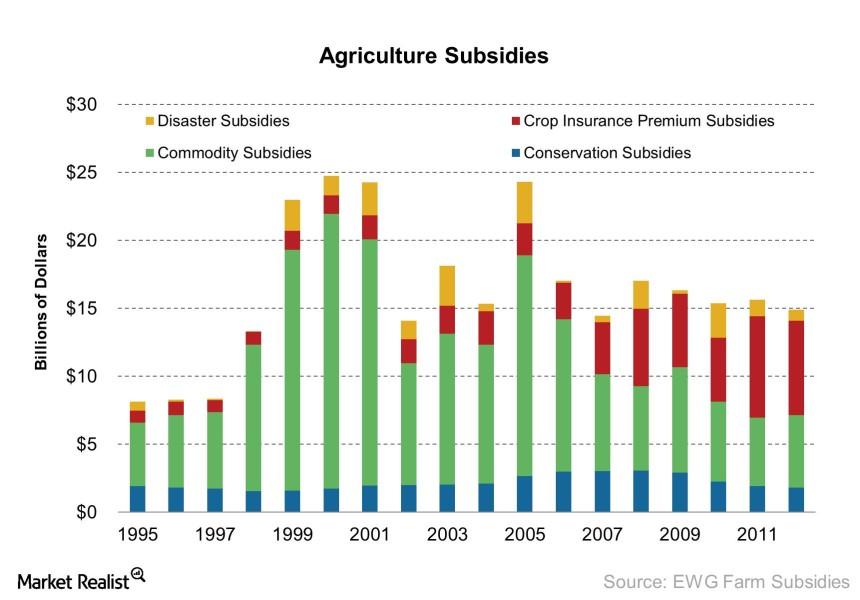
Must-know: Important types of farm subsidies in the United States
As a critical part of economic and social welfare, agriculture is a key industry governments around the world support.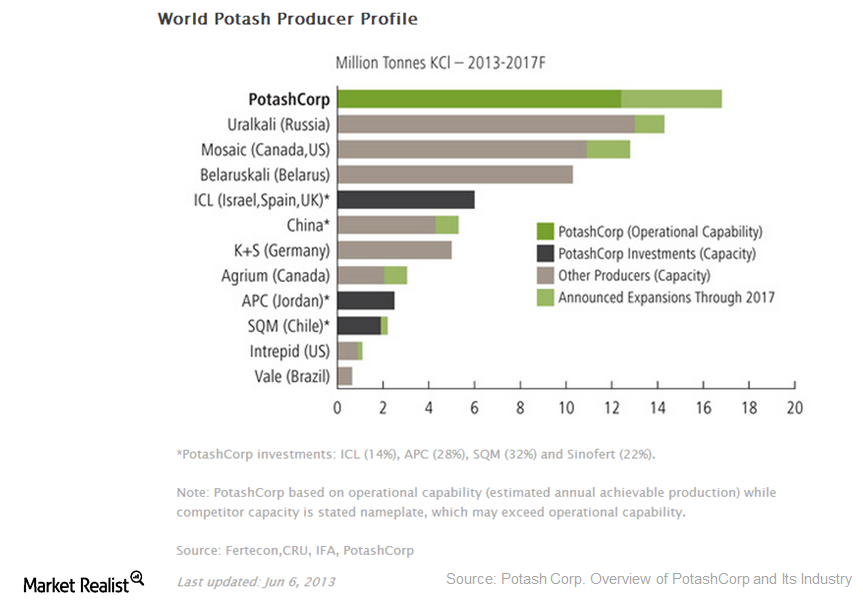
Why are potash producers increasing capacity?
Introduction Most often, investors expect new capacity addition plans as a positive indicator of booming business. This is because companies often increase their capacity following a period of demand boom. But capacity increases can be negative, as we saw with several fiber optics companies back during the tech bubble, when earnings plummet on falling demand […]
